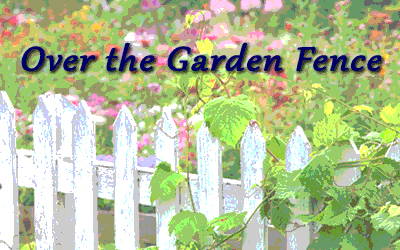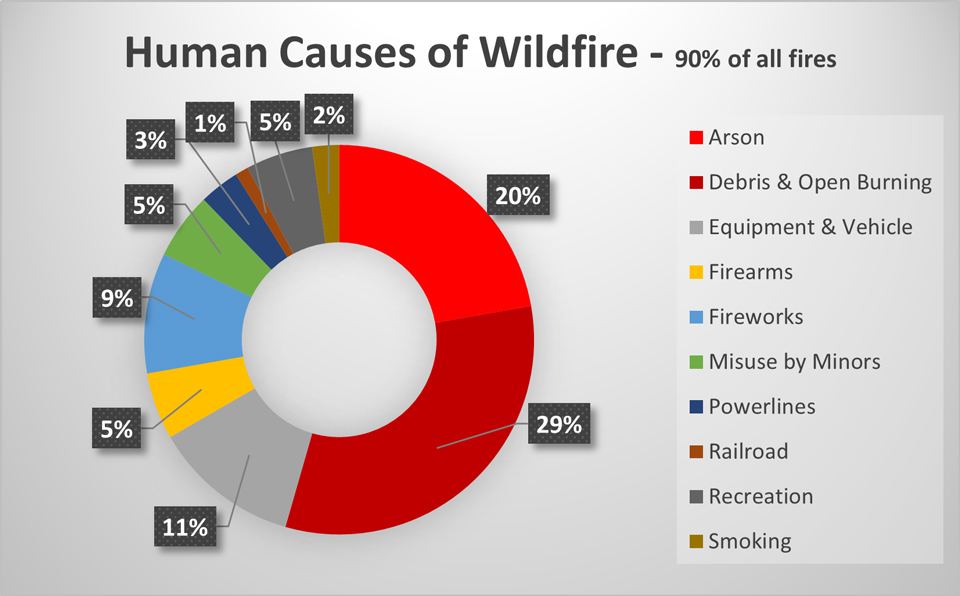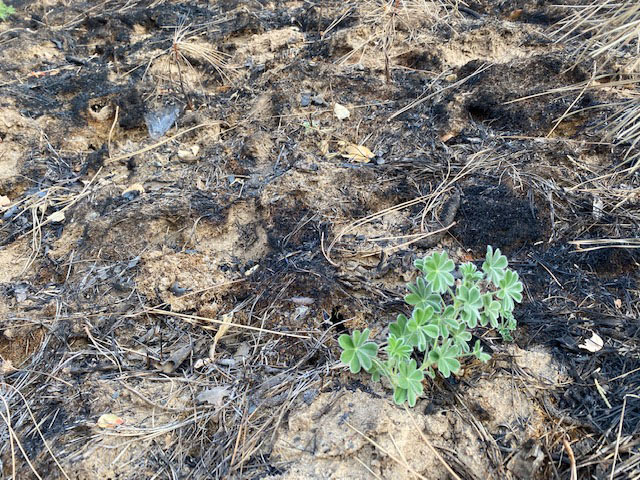LWF_RetrofitGuide_Accessible_for_Web

Do your part to prevent human caused wildfire: Part 5
 September 26, 2022 – By Michele Nowak-Sharkey, UC Master Gardener of Mariposa County – The largest natural cause of fire is lighting. However, most fires are human caused. The percentage varies from 89% – 95% depending on the source. With the increase in drought, fuel build-up in unburned forests, earlier springs, higher temperatures, beetle infested weakened trees, with the addition of a bit of wind and the same actions that might have easily extinguished a small fire in the past are now creating dangerous infernos.
September 26, 2022 – By Michele Nowak-Sharkey, UC Master Gardener of Mariposa County – The largest natural cause of fire is lighting. However, most fires are human caused. The percentage varies from 89% – 95% depending on the source. With the increase in drought, fuel build-up in unburned forests, earlier springs, higher temperatures, beetle infested weakened trees, with the addition of a bit of wind and the same actions that might have easily extinguished a small fire in the past are now creating dangerous infernos.
Being aware of our everyday choices can impact the number and magnitude of fires in the future.
(https://www.nifc.gov/fire-information/fire-prevention-education-mitigation/wildfire-investigation)

Debris and open burning include burn piles, yard debris, burn barrels, ditch/fence line burning, pest control, open trash burning, burning personal items, distress/signal fires, land clearing, right-of-way hazard reduction, or other escaped controlled burning. Windblown embers or fire creeping from the control burn area into un-cleared vegetation are the primary ignition mechanisms.
How to prevent: Landscape debris piles must be in 4 feet by 4 feet piles. Clear all flammable material and vegetation within 10 feet of the outer edge of pile.
Keep a water supply and shovel close by.
A responsible adult is required by law to be in attendance until the fire is out.
Stay mindful of current weather conditions when burning. If it’s windy and the surrounding vegetation is very dry, it may be best to wait and burn another day.
Check Mariposa County for burn permit requirements. 209 966-1200. (https://cemariposa.ucanr.edu/Fire_Information/Permits_and_Regulations/Mariposa_County_Permitting)
Arson is the criminal act of deliberately or maliciously setting fire to property including public lands with the intent to damage or defraud. Devices and “hot sets” are commonly used to ignite fires.
How to prevent: If you see or know of unusual activity in an area where wildfires are occurring, report it immediately. Note descriptions of vehicles and people in the area including dates, times, and location. Photos and videos are extremely helpful!
Equipment/Vehicle fires range from heavy construction to small portable engines (passenger vehicles/RVs, motorcycles, OHV, ATV, trailers, road graders, bulldozers, tractor trailers, welders, grinders, wind generators, chain saws, pumps, generators, etc.).
Ignitions sources are mechanical breakdowns/malfunctions such as exhaust (direct heat transfer, organic material collecting on the exhaust system, and particles), catalytic converter pieces, hot metal fragments, metal/pavement contact (dragging trailer chains and metal parts), friction, flat tires, spark arrestor malfunctions, faulty electrical system/wiring, collisions, refueling operations, and rock/hard surface strikes.
How to Prevent: Perform regular maintenance on your vehicles – secure chains, inspect for dragging parts, check tire pressure, and properly maintain brakes. Visit Ready for Wildfire equipment use for more prevention tips. (https://www.readyforwildfire.org/prevent-wildfire/equipment-use)
Firearms and explosives use requires being aware of any firearm projectiles along with flares from flare guns and signal flares.
How to Prevent: Explosives, exploding targets, incendiary ammunition and tracer bullets are prohibited on public lands during high fire danger. Check for fire restrictions and prohibited uses in the area. To prevent wildfires while target shooting, follow these tips:
Bring a shovel and water or fire extinguisher.
Place your targets on dirt or gravel, clear and away from grass and other vegetation.
If fire danger is high (dry, hot, and windy) consider shooting at an established outdoor or indoor range.
Know your ammunition – don’t shoot steel component, tracer, or incendiary bullets.
Bullets can spark when striking solid objects, sending hot fragments into vegetation – don’t shoot trash like TVs and appliances or at rocks and metal targets such as signs.
Fireworks burn at extremely elevated temperatures making all fireworks ignition sources especially the airborne type (i.e., bottle rockets and roman candles). Even sparklers burn at 1200°F.
How to prevent: Despite the dangers of fireworks, few people understand the associated risks – devastating burns, other injuries, fires, and even death. During times of high fire danger, federal and local agencies impose fire restrictions and/or fire prevention orders.
Misuse of fire by minors has its own category. Young children, ages 12 or younger, motivated by normal curiosity may use fire in an experimental fashion; “playing with matches.” They look for easily accessible ignition devices and frequently use both paper and wood matches, lighters, fireworks, or magnifying glasses to ignite fires.
How to prevent: Set a good example and teach children fire safety at an early age. The most critical message for children to learn is that matches, and lighters are tools and not toys! Parents should never use lighters, matches and fire for fun – children will mimic the behavior,
Power line caused wildfires are often due to high winds, contact with vegetation, equipment failure, or human or animal contact with a power line (conductor wire). Several of these factors may work to cause a fire, such as wind blowing vegetation into contact with the electrical equipment.
How to prevent: Proper maintenance including vegetation clearance around equipment can help prevent wildfires. For your safety, however, stay away from power lines, meters, transformers, and electrical boxes. Leave the maintenance to the professionals – if you see vegetation close or in contact with power lines or bird nest close to the lines or conductor boxes, notify your utility company.
Recreation and ceremony include campfires improperly constructed, unattended, improperly extinguished, or abandoned; barbeque/smokers; bonfires; ceremonial fires; gas cookers, warming and lighting devices; luminary (sky lanterns); and outdoor fireplaces, metal fire rings and candles.
How to Prevent: Learn how to construct a proper campfire and how to put it out. (https://smokeybear.com/en/prevention-how-tos/campfire-safety) Never leave grills and smokers unattended. Watch weather conditions closely when considering have a bonfire, ceremonial fire or using candles.
Smoking fires are generated from discarded unextinguished cigarettes and other materials used for smoking. Wildfires caused by smoking activities or accoutrements, include matches, cigarettes, cigars, pipes, electronic cigarettes (vape heads), and drug paraphernalia.
How to Prevent: Never flick cigarette butts out the window. Watch where you toss used matches and other smoking accoutrements. Beware of wind conditions when using such paraphernalia.
We want to get back to fire as a beneficial effect on the landscape rather than a damaging effect.
As Smokey says “Only YOU can help prevent wildfires” by our personal actions and the actions we take as a community.
Next Up: Defensible Space and How to Create It
Related:
Over the Garden Fence – The Partnership Between Humans and Nature During Fire Recovery: Part 4
Over the Garden Fence – The Partnership Between Humans and Nature During Fire Recovery: Part 3
Over the Garden Fence – The Partnership Between Humans and Nature During Fire Recovery: Part 2
Over the Garden Fence – The Partnership Between Humans and Nature During Fire Recovery
For assistance, contact our Helpline at (209) 966-7078 or at mgmariposa@ucdavis.edu. We are currently unable to take samples or meet with you in person but welcome pictures.
The U.C. Master Gardener Helpline is staffed; Tuesdays from 9:00 A.M. – 12:00 P.M. and Thursdays from 2:00 P.M. – 5:00 P.M.
Clients may bring samples to the Agricultural Extension Office located at the Mariposa Fairgrounds, but the Master Gardener office is not open to the public. We will not be doing home visits this year due to UCANR restrictions.
Serving Mariposa County, including Greeley Hill, Coulterville, and Don Pedro
Please contact the helpline, or leave a message by phone at: (209) 966-7078
By email (send photos and questions for researched answers) to: mgmariposa@ucdavis.edu
For further gardening information and event announcements, please visit: UCMG website: https://cemariposa.ucanr.edu/Master_Gardener
Follow us on Facebook at: https://www.facebook.com/mariposamastergardeners
Master Gardener Office Location:
UC Cooperative Extension Office,
5009 Fairgrounds Road
Mariposa, CA 95338
Phone: (209) 966-2417
Email: mgmariposa@ucdavis.edu
Website: http://cemariposa.ucanr.edu/Master_Gardener
Visit the YouTube channel at UCCE Mariposa.
August 26, 2022 – By Michele Nowak-Sharkey, UC Master Gardener, Mariposa County – Wildfire has entered our common vocabulary over the past 15+ years across California and Mariposa County.
From the Telegraph Fire in ‘08 to the Washburn, Agua and Oak fires, Mariposa County has experienced unpredictable blazes, resulting in ash strewn hills of black and gray. In fire-burned areas, it looks as  if it will always be this way.
if it will always be this way.
And yet for landscape recovery after fire, “time heals all wounds.” Nature heals. As stewards of the land where we have built our community, we can partner with nature to support healing of the places we love.
Over the next few weeks this series will offer suggestions about working with nature when fire has touched your land and how to help prevent fire spread if it happens again.
Sources for best practices in returning to and rehabilitating property after fire: https://www.mariposacounty.org/2644/Returning-After-the-Fire.
The following is adapted from the California Native Plant Society Fire Recovery Guide: https://www.cnps.org/give/priority-initiatives/fire-recovery.
Things to consider during the clean-up and rebuilding after fire:
Create a traffic pattern for equipment and parking vehicles. Decide on a place for debris and rebuilding materials.
Follow local and federal guidelines when sifting through to find personal belongings and cleaning up.
Vegetation ash is not toxic. This ash is from your shrubs, trees, and garden. Vegetation ash can provide cover for scorched earth.
While you are mapping your strategy for rebuilding structures, create action items for rehabilitating the landscape section by section. It won’t happen all at once. As they say, “Rome wasn’t built in a day.”
Wildfire recovery is a steady process of damage assessment, evaluation of new conditions and a plan of what to do next.
Be gentle with yourself and know you have a wonderful partner in nature. If you are willing to listen and learn, nature will respond in kind.
And as time heals, the black and gray of the landscape will soon be dotted with greens and browns once more.
Next: Scorched Earth – Soil Rx: Stopping Soil Erosion
For assistance, contact our Helpline at (209) 966-7078 or at mgmariposa@ucdavis.edu. We are currently unable to take samples or meet with you in person but welcome pictures.
The U.C. Master Gardener Helpline is staffed; Tuesdays from 9:00 A.M. – 12:00 P.M. and Thursdays from 2:00 P.M. – 5:00 P.M.
Clients may bring samples to the Agricultural Extension Office located at the Mariposa Fairgrounds, but the Master Gardener office is not open to the public. We will not be doing home visits this year due to UCANR restrictions.
Serving Mariposa County, including Greeley Hill, Coulterville, and Don Pedro
Please contact the helpline, or leave a message by phone at: (209) 966-7078
By email (send photos and questions for researched answers) to: mgmariposa@ucdavis.edu
For further gardening information and event announcements, please visit: UCMG website: https://cemariposa.ucanr.edu/Master_Gardener
Follow us on Facebook at: https://www.facebook.com/mariposamastergardeners
Master Gardener Office Location:
UC Cooperative Extension Office,
5009 Fairgrounds Road
Mariposa, CA 95338
Phone: (209) 966-2417
Email: mgmariposa@ucdavis.edu
Website: http://cemariposa.ucanr.edu/Master_Gardener
Visit the YouTube channel at UCCE Mariposa.
To Seed or Not to Seed? – The best approach to revegetation
September 23, 2022 – Tery Susman, UC Master Gardener of Mariposa County – To seed or not to seed…that truly is the question.
 Adapted from the California Native Plant Society Fire Recovery Guide:
Adapted from the California Native Plant Society Fire Recovery Guide:
https://cnps.org/gove/priority-initiatives/fire-recovery
ANR Publication 8366 – Recovering from Wildfire: a Guide for California’s Forest Landowners: https://anrcatalog.ucanr.edu/Details.aspx?itemNo=8386
Our human tendency is to fix what we perceive as a potential problem or as something “broken” or “untidy”. Our first thought is to reseed flowering plants and grasses on our fire scorched property to speed up vegetation establishment and soil stability; fixing what is “broken”. However, recent research has shown that seeding is not more effective than letting the area recover naturally; and given the risk of introducing invasive species, it is generally no longer recommended.
Natural regeneration gives the land a chance to recover on its own from the existing soil seed bank, nearby seed sources, and the resprouting of surviving perennial plants.
The research indicates two important points regarding reseeding grasses following wildfire:
Potential negative effects of this practice include:
Seeding is no longer the recommended practice following a wildfire. However, many experts also agree that for specific erosion control problems, it may be necessary to seed native perennial grass to mitigate these issues.

Potential positive effects of seeding grasses:
Before you decide to plant grass seed on wildfire damaged soil and slopes, reach out to Natural Resources Conservation Services (NCRS) for a site-specific evaluation of your post- fire property needs:
Natural Resources Conservation Services – (209) 966-3431 www.nrcs.usda.gov.wps.portal.nrcs/site/ca/home
There are distinct reasons that may be addressed by seeding, but in general natural regeneration is the best option. Remember, lands have recovered many times after wildfires. Once human-made debris is removed, in most cases the land will heal on its own. It just takes time!
To seed or not to seed? In most cases the answer is not to seed. Next: YOU can help prevent wildfire spread.
Related:
Over the Garden Fence – The Partnership Between Humans and Nature During Fire Recovery: Part 3
Over the Garden Fence – The Partnership Between Humans and Nature During Fire Recovery: Part 2
Over the Garden Fence – The Partnership Between Humans and Nature During Fire Recovery
For assistance, contact our Helpline at (209) 966-7078 or at mgmariposa@ucdavis.edu. We are currently unable to take samples or meet with you in person but welcome pictures.
The U.C. Master Gardener Helpline is staffed; Tuesdays from 9:00 A.M. – 12:00 P.M. and Thursdays from 2:00 P.M. – 5:00 P.M.
Clients may bring samples to the Agricultural Extension Office located at the Mariposa Fairgrounds, but the Master Gardener office is not open to the public. We will not be doing home visits this year due to UCANR restrictions.
Serving Mariposa County, including Greeley Hill, Coulterville, and Don Pedro
Please contact the helpline, or leave a message by phone at: (209) 966-7078
By email (send photos and questions for researched answers) to: mgmariposa@ucdavis.edu
For further gardening information and event announcements, please visit: UCMG website: https://cemariposa.ucanr.edu/Master_Gardener
Follow us on Facebook at: https://www.facebook.com/mariposamastergardeners
Master Gardener Office Location:
UC Cooperative Extension Office,
5009 Fairgrounds Road
Mariposa, CA 95338
Phone: (209) 966-2417
Email: mgmariposa@ucdavis.edu
Website: http://cemariposa.ucanr.edu/Master_Gardener
Visit the YouTube channel at UCCE Mariposa.